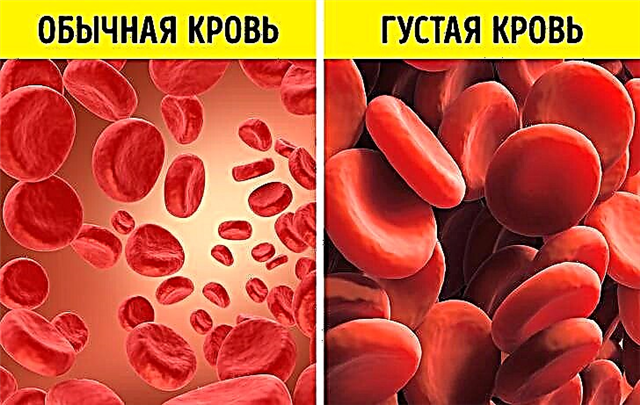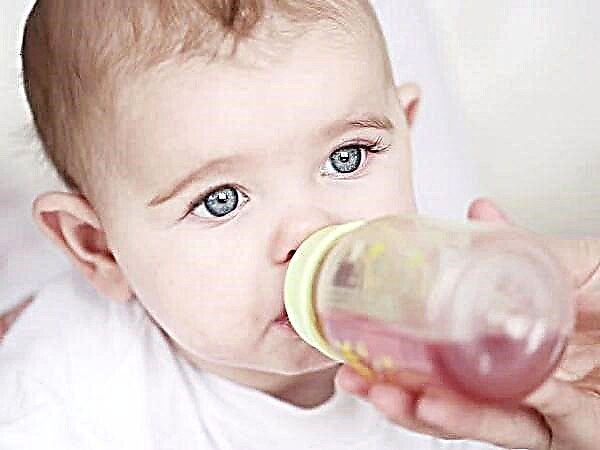The baby has grown up, and an exciting time for vaccinations for every mother comes. In the modern world, there is a lot of information about vaccinations and it is very controversial. This only complicates the situation and even more frightens mothers of even healthy children. The largest number of debates flares up around the DPT vaccine. What is this vaccine? Is it really so necessary? What vaccine options are there? We will discuss all this and much more.
Infectious diseases have always claimed millions of lives, without discerning people into adults and children, rich and poor.
According to WHO, in 2011, 4880 people fell ill with diphtheria in the world, 162,047 people fell ill with whooping cough, 14,272 cases of tetanus were registered, but according to the same statistics, thanks to polio vaccination, the number of cases is decreasing - 285 cases. Of those with tetanus, 48% died.
Due to the numerous refusals of vaccinations, infections began to raise their heads again, and diphtheria, tetanus, and whooping cough are no exception.
The World Health Organization in 1974 developed an expanded immunization program for the population. These are organizational measures to create active immunity in the population in all countries of the world through the introduction of vaccines and the prevention of infection.
WHO plans to protect every inhabitant of the planet from the 20 most dangerous infections by 2025, vaccinate people against 27 diseases in economically developed countries, and reduce the number of injections due to associated vaccines.
It is also necessary to create collective immunity, that is, a certain number of vaccinated people. It is this indicator that is important in assessing the epidemic situation. A decrease in herd immunity leads to an epidemic of a particular disease.
What does DTP protect against?

- whooping cough is a person-to-person disease that affects the respiratory, cardiovascular and nervous systems.
Of the unvaccinated children, 70-100% of unaffected children become infected with this disease. There are not many deaths from this disease, but it is very dangerous for children under one year old and premature babies. Often, babies are infected by their brothers or sisters who are not vaccinated and go to kindergarten or school.
The causative agent of the disease irritates the respiratory center, which leads to a prolonged, spastic cough, as well as reflexively irritates neighboring centers: vomiting, vascular, skeletal muscles, which leads to vomiting, increased blood pressure, convulsions.
Immunity from the mother to the newborn child is not transmitted, for this reason, it is better to separate the mother and child who are ill with whooping cough;
- diphtheria is an acute infectious disease characterized by toxic damage to the cardiovascular and nervous systems. The course of the disease in the unvaccinated is severe, with a large number of complications. Fatalities 50 - 60%;
- tetanus is a disease transmitted by contact, mainly after burns, animal bites, stab wounds.
Since immunity does not form immediately after vaccination, it is best to vaccinate before the baby goes, that is, before the period of possible trauma.
The causative agent of the disease releases a toxin that damages the nervous system and provokes seizures. The course of the disease is severe. On average, about 80% of cases die.
What does the vaccine include?
The composition of the DPT vaccine is tetanus and diphtheria toxoid. The vaccine also contains a whole-cell pertussis component, that is, a killed but not split pertussis pathogen.
Toxoids are not able to protect a person from illness, but their introduction is necessary to prevent the most severe complications caused by tetanus and diphtheria (heart failure, respiratory failure and death). Vaccinated patients tolerate diseases more easily and with a favorable outcome.
Thus, DPT is a vaccine that protects children and adults from whooping cough and from the severe complications of tetanus and diphtheria.

Now there are several options for vaccines that can be used to vaccinate a baby.
- DTP. The vaccine is administered to children under 4 years of age to form their specific immunity to whooping cough, diphtheria and tetanus. Production - Russia.
- "Bubo-kok". Contains tetanus and diphtheria toxoids, Bordet-Zhangu whole-cell bacillus and hepatitis B antigen. Approved for vaccination of children under 4 years of age. But you need to immediately make a reservation that of all the proposed vaccines, there are most often undesirable reactions to it, fever and the appearance of a sudden cry in a baby, allergic reactions.
- "Bubo-M". Another Russian vaccine, used for the prevention of diphtheria, tetanus and viral hepatitis B, without the pertussis component. Due to the absence of pertussis sticks, the vaccine is approved for vaccination of children over 6 years old, adolescents and adults.
- "Pentaxim". From the name of the vaccine, it is clear that it contains five components, protects against 5 infections. These are diphtheria, tetanus, whooping cough, haemophilus influenzae, poliomyelitis. The multicomponent nature of this vaccine is not its only plus. The pertussis component in this vaccine is cell-free, that is, split, which makes the vaccine less reactive than its Russian counterpart. Production - France. I also draw the attention of parents to the polio component. It includes three inactivated (i.e. weakened) types of this virus. In the case of using, for example, DPT or Bubo-Kok vaccines, the polio vaccine will have to be done separately.
- Infanrix. The Belgian vaccine, which is an analogue of the DPT vaccine, contains a cell-free pertussis component. This vaccine also has modifications. Infanrix Hexa is similar in composition to Pentaxim, but without hemophilic infection. Infanrix IPV protects against whooping cough, diphtheria, tetanus and poliomyelitis.
- "Tetrakok". Manufacturer - France.
- Tritkanriks-NV.
Each of the vaccines has its own advantages and disadvantages. You should consult with your local pediatrician or immunologist about which one is best for the child.
Now it is recommended to vaccinate the child with polyvaccines. They are considered to be safer than multiple monovaccines at the same time. Mothers are often afraid to make combination vaccines, believing that it is safer to do each component one at a time. But they forget that every day their baby's body encounters hundreds of antigens (bacteria and viruses living in the air, food, toys and personal things, mother's and father's skin), and the child's body resists all this.
Therefore, an encounter with five antigens will do no more harm than an encounter with one. But frequent visits to the clinic, alas, can play a negative role. Plus, one polyvaccine contains fewer additives than the sum of the monovaccines.
Which specialists should I visit before vaccination?
Usually, all children under one year old undergo a preventive appointment with a pediatrician at least once a month (up to 6 months), once every three months (after 6 months), take a clinical blood test. If the child has neurological diseases, then before this vaccination, it is also necessary to undergo a neurologist. If a child has allergic reactions, the local pediatrician can refer the child for advice from an allergist. With changes in the leukocyte blood count, it is possible to consult an immunologist.
Often, the listed experts recommend a particular vaccine, focusing on the child's health. A medical challenge from vaccination is also possible.
“Better to be ill than vaccinated” is a fairly common phrase on the Internet. In the case of whooping cough, this is partially true, if, of course, we are talking about older children and adults. Immunity after the introduction of an immunopreparation fades over time, but if a person has had whooping cough, the type-specific immunity remains for life. For the remaining two infections, this is playing with fire.
About preparing a child for DPT vaccination

And now all the specialists have passed, all the tests have been passed. Mom herself must answer the following questions and take into account certain points:
- are there any sick people in the family. We are not talking about distant relatives, but about those people who live with the child in the same house and take care of the baby. The disease includes not only obvious signs, such as coughing, sneezing, but also sore throat, vomiting, loose stools, mild fever;
- it is also not advisable to be vaccinated before the upcoming travel and flights;
- try to exclude guests a week before and at least a week after vaccination. This is necessary in order to reduce the number of contacts with the sick and the likelihood of infection of the baby with SARS;
- for the same purpose, it is better to reduce the number of walks in public places (shops, banks, playgrounds with a large crowd of children);
- on the day of vaccination, you need to go to a pediatrician, it is advisable to see a doctor either by appointment, if such a system is taken into account by the clinic, or so that your dad or one of your relatives will stand in line for you. If this is not possible, do not be upset and remain calm;
- you may need to collect the drug from the pharmacy yourself. In this case, it is important to ensure that the vaccine is properly packaged, it cannot be overcooled and overheated, otherwise it will simply turn out to be useless (at best), or even dangerous.
Before going to the pharmacy, call there and find out if you need to take a thermal bag and refrigerants with you, some pharmacies pack the drug themselves. Do not throw away the receipt, it should indicate the time of purchase of the drug, the storage time outside the refrigerator is no more than 2 hours. Also note that the vaccine cannot be cloudy. If there is a suspicion of improper storage, delivery, or you find an expired expiration date, it is better to refuse this vaccine;
- after the vaccination, it is advisable not to walk or swim. If you have a temperature reaction the next day, also refrain from walking and swimming.
A little about immunity after vaccination
After this vaccination, anti-toxic immunity and type-specific anti-pertussis immunity are developed. It usually forms by the third week after the vaccine is made. Neither one nor the other is inherited. It is inferior to immunity after suffering whooping cough.
About the vaccination calendar

Often in polyclinics, mothers are given a memo with a calendar of preventive vaccinations. If you were not given a memo, do not be upset, there is everything in the Internet freely available. The national vaccination calendar lists all the vaccinations that are given in a given country, and the timing is indicated.
The first DPT vaccination is given to children at the age of 3 months. After an interval of 1.5 months from the first vaccination, the second vaccination is administered at 4.5. After another 1.5 months (six months), the third vaccination is given. This scheme does not depend on the vaccine that you and the doctor have chosen for the child. If it happened that the period for the introduction of the drug was missed (for example, you had a medical withdrawal) and you came for the first vaccination later, the interval for further vaccinations should remain the same - 1.5 months. If you received the first vaccination, and came to the second not after 1.5 months, but later, then you need to be vaccinated as early as possible, but keeping the interval before the third vaccination.
Revaccination of DPT is carried out for children aged 18 months. Pertussis vaccine can only be given up to the age of four. If you could not, or did not have time, revaccination will be carried out with vaccines containing only tetanus and diphtheria components.
The next two revaccinations are carried out with the ADS or ADS-M vaccine. They are done at the age of 7, then at 14.
Due to the weakening of antitoxic immunity, revaccination is required every 10 years.
The scheme of administration of the polio vaccine up to one and a half years coincides with the DTP scheme - 3 months, 4.5 months, 6 months and revaccination at 18 months. Then repeated revaccinations at 20 months and at 14 years.
Often, parents postpone the vaccination, citing the fact that the child should get stronger. The child's immune system, of course, will get stronger with age, but the older the baby becomes, the stronger the reaction to vaccination will be, precisely because of the violent immune response.
This is inoculated into the muscle. In babies, this is the outer part of the thigh, in adults - the upper third of the shoulder, in the region of the deltoid muscle.
What happens after vaccination?
After returning home, the mother begins to measure the temperature of the child and often sees that she rises. This usually does not happen immediately, on the second - third day after vaccination. Also, often in the place where the injection was made, the mother may notice swelling and redness. The size of the redness usually does not exceed 8 cm. If the child is very small, he may be anxious, slap himself on the leg into which the injection was made. Older children may complain of soreness at the injection site.
Mothers are usually very worried and make many mistakes when trying to help. For example, warming compresses or ointments are applied. This does not need to be done, such self-medication can lead to suppuration.
Temperature is considered a normal body reaction. How high the temperature rises depends on the immune response. Cases of a rise in temperature to 39.5 ° C are described, and this is also considered a normal body reaction to vaccination.
To cope with the temperature and reduce pain at the injection site, you need to give the child the drug ibuprofen or paracetamol at an age-specific dosage.
With a similar reaction to the vaccine, you need to adjust the diet and fluid intake. If the baby is still a baby, offer him breast more often; if the baby is bottle-fed or is already receiving complementary foods, give the baby water. Do not introduce new foods three days before and at least three days after the vaccination, observe a sleep and wake schedule.
The reactions described above do not depend on which vaccine you have given. Often, mothers whose babies have received DPT say that the child did not even notice it. And on the contrary, after "Pentaxim" or "Infanrix" mothers complain of post-vaccination reactions.
If the temperature after vaccination rises above 40 ° C, you must inform your doctor. In the future, the vaccine will be given without the pertussis component.
Complications after vaccination

The topic is very subtle. No one will ever be able to say with certainty that this particular child will develop this or that complication. Just like no one can predict whether a complication will develop from a disease. Therefore, here I will just give the comparative statistics.
| Disease | Complication | The number of complications per 1000 people with a disease | Number per 1000 people when vaccinated |
| Whooping cough | death | 10 - 40 children under 4 years old | — |
| pneumonia | 100 | 0,25 | |
| convulsions | 20 | 0,6 | |
| encephalopathy | 4 | 0,01 | |
| Diphtheria | death | 100 | — |
| Tetanus | death | 170 | — |
| anaphylactic shock | — | 0,01 |
It is important to understand that the drug itself, administered to a child, does not cause diseases of the nervous system, kidneys, respiratory system or liver, but it can provoke the start of hidden processes that no one knew about before.
Contraindications to vaccine prophylaxis
Contraindications for all vaccinations are divided into absolute and temporary.
Absolute contraindications to the administration of the DPT vaccine:
- progressive diseases of the central nervous system;
- history of seizures (not febrile);
- age after 4 years.These children are given drugs without a pertussis component.
Temporary contraindications are all diseases in the period of exacerbation, infectious and non-infectious.
If there is an allergic reaction to "Neomycin" or "Polymyxin", it is necessary to consult an allergist or immunologist to choose the vaccine necessary for this particular child.
A little about the compatibility of massage vaccinations and physiotherapy
It so happens that the time of the massage or the physiotherapy prescribed for the child coincides with the time of vaccination. Mom needs to tell the doctor about this. You may have to postpone the beginning of the procedures, or slightly shift the day of the child's vaccination. The combination of procedures is not dangerous, but each baby reacts to the vaccination in its own way, therefore it is better to follow the sequence of actions. For example, get vaccinated, and after 3 - 4 days start massage, or finish physiotherapy and get vaccinated the next day.
The DPT vaccine is perhaps the most controversial and fearsome among parents. But all civilized countries strive to reduce the number of dangerous diseases and to save lives, especially among the child population. It is for this reason that it is at least unwise to refuse DTP vaccination in the national immunization schedule. But the final word is always with the parents.



